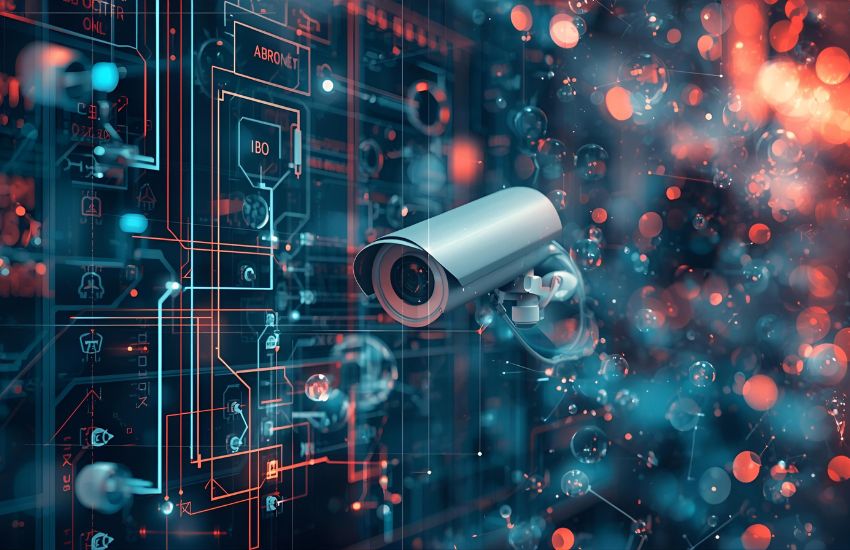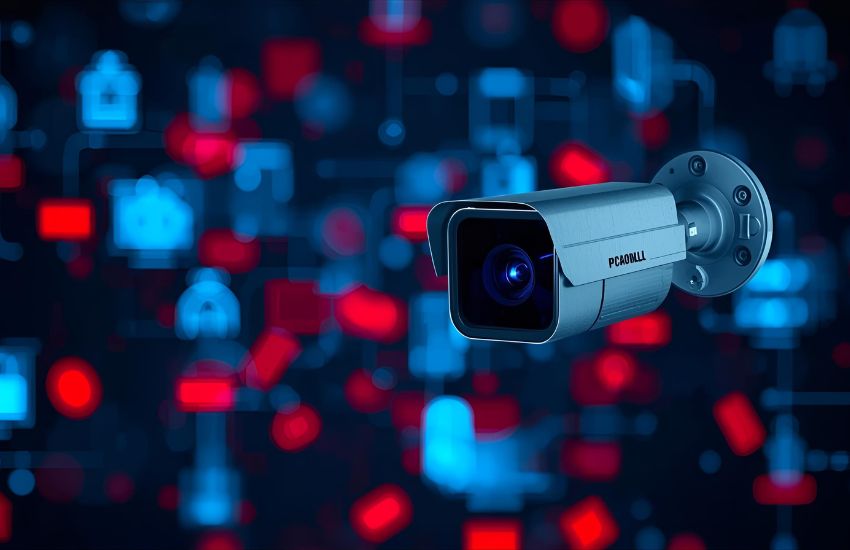Upgrading your analog CCTV cameras to an IP camera system can transform the way you manage and secure your property. Unlike traditional analog cameras, IP cameras offer superior image quality, greater flexibility, and easier scalability. By switching to an IP-based camera system, you gain access to advanced features such as Power over Ethernet (POE), remote viewing via IP address, and integration with modern Network Video Recorders (NVR). This upgrade not only enhances your surveillance capabilities but also simplifies installation and maintenance by reducing the need for multiple cables.
Upgrading from analog CCTV cameras to a new IP security system enhances video quality, scalability, and remote access. Unlike coax-based analog setups, IP cameras connect via network routers, enabling higher resolution and smarter features. This transition improves surveillance efficiency, making it easier to monitor and manage security through digital networks and modern technology.
Benefits of Upgrading Analog CCTV Cameras to an IP Camera System

Upgrading from analog to IP security cameras offers numerous advantages that significantly enhance your video surveillance capabilities. If you are considering moving from an old analog system to a modern solution, understanding these benefits will help you make an informed decision and optimize your security camera system.
Improved Image Quality and Resolution
One of the primary benefits of upgrading your existing analog CCTV to IP cameras is the significant improvement in video quality. Analog systems often rely on coax cable connections that limit resolution, whereas a new IP camera system supports high-definition video, including 4K IP cameras. This enhanced clarity allows you to capture finer details, making it easier to identify faces, license plates, and other critical information.
Seamless Integration with IP Networks
Switching your CCTV cameras to IP enables integration into your existing IP network. Unlike analog CCTV systems that require separate coax cable runs, IP cameras use Ethernet connections, often powered by POE ports. This setup simplifies installation and reduces cable clutter. Additionally, an IP video server or video encoder allows you to convert signals from your analog cameras into IP streams, making it possible to maintain hybrid systems during the transition.
Advanced Recording and Management Features
With IP camera systems, you gain access to advanced recording solutions such as Network Video Recorders (NVRs) and the option to assign static IP addresses for easier network management. Unlike traditional DVRs used in analog systems, NVRs offer better scalability and remote access. The ability to record, manage, and playback video surveillance footage remotely enhances overall system flexibility and security.
Cost Efficiency and Future Proofing
Upgrading your analog system to IP cameras can also be cost-effective in the long run. While the initial investment might seem higher, the reduced need for coax cable, easier installation via POE camera systems, and the potential for hybrid setups that combine analog and IP cameras protect your existing investments. This approach ensures your security infrastructure remains adaptable as technology advances.
See more about…IP Camera Network Traffic
Choosing the Right IP Cameras and Ports for a Reliable Upgrade

When choosing the right IP cameras and ports for a reliable upgrade, you must consider both the technical requirements and your specific surveillance needs. A key advantage of an IP-based network is the ability to monitor your security cameras remotely, often through convenient apps on your iPhone or other smart devices. This flexibility requires a stable connection, which can be established via wired Ethernet cables like Cat-5 or through WIFI depending on your environment and wiring options. If you have existing coaxial cable or coax wiring, technologies such as HD over coax can facilitate the transition by transmitting video signals without the need to replace all cabling.
Setting up your cameras within the network also involves configuring network settings properly. Utilizing DHCP can simplify device management by automatically assigning IP addresses, but static IPs may be preferable in larger or more complex setups to ensure consistent access. Choosing cameras from reputable manufacturers, such as Axis, can guarantee compatibility with advanced network features and reliable performance.
Furthermore, understanding your LAN infrastructure, including the availability of POE ports, will influence how you power your cameras and connect them. Whether you’re upgrading to 2K resolution cameras or integrating with your existing system, ensuring your Ethernet and coaxial cables support the required bandwidth and signal quality is critical for uninterrupted surveillance. By carefully selecting your IP cameras and configuring your ports and network settings, you create a reliable, scalable security system that meets your current needs and adapts to future expansions.
See more about…best wireless security camera system
Conclusion
Upgrading from an analog camera system to new IP cameras represents a significant step forward in surveillance technology. By leveraging Ethernet connections and POE switch capabilities, you can streamline wiring and power management while maximizing access to your surveillance feeds through multiple ports. Although coax cables have traditionally supported analog cameras, integrating new IP cameras often requires replacing or adapting existing coax infrastructure to ensure HD and even 4K video quality. This transition allows you to benefit from advanced network video features, providing enhanced access and control over your security systems.
Whether you use a router or a direct Ethernet connection, a well-designed IP surveillance system offers superior flexibility and scalability compared to legacy DVR setups. With digital video streaming and access from various devices, including laptops and mobile platforms, you gain full control over your surveillance system anytime and anywhere. Ultimately, combining all these elements ensures your surveillance remains reliable, future-proof, and capable of meeting the evolving demands of modern security.
See more about…IP Camera Alarm Output
Frequently Asked Questions (Upgrade Analog CCTV Cameras to IP Security System)
Can you convert an analog camera to IP?
Yes, you can convert an analog camera to IP using a video encoder or IP converter. This device digitizes the analog video signal and transmits it over an IP network, allowing remote access, digital recording, and integration with modern NVR systems. It’s an affordable way to upgrade existing analog CCTV systems to IP-based setups.
Can I upgrade my CCTV camera?
Yes, you can upgrade your CCTV camera to improve image quality, storage, and smart features. Upgrading may involve replacing analog cameras with HD or IP models, upgrading DVRs to NVRs, or adding AI and remote monitoring capabilities. Ensure compatibility between cameras, cables, and recorders for a smooth upgrade and better performance.
Can you convert coax to IP?
Yes, you can convert coax to IP using a video encoder or coax-to-IP converter. These devices digitize the analog video signals from coaxial cables and transmit them over an IP network. This allows older analog CCTV cameras to integrate with modern IP-based systems, enabling remote access, digital recording, and improved management.
Which is better, analog or IP CCTV?
IP CCTV cameras are generally better than analog because they offer higher resolution, clearer images, and advanced features like remote access, motion detection, and AI analytics. They transmit video digitally over a network, ensuring better quality and flexibility. However, analog systems are more affordable and easier to install, making them suitable for smaller setups.
Can I use my old security cameras on a new system?
Yes, you can use old security cameras on a new system if they are compatible with the new DVR or NVR. Analog cameras work with analog DVRs, while IP cameras need NVRs or network support. You may need adapters, converters, or hybrid recorders to connect older cameras to modern systems effectively.
